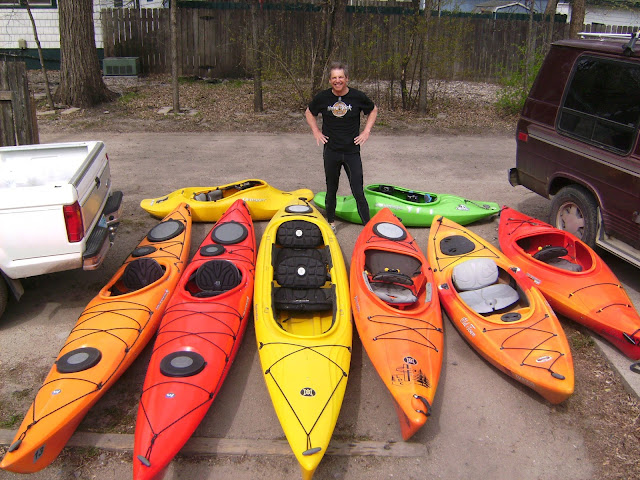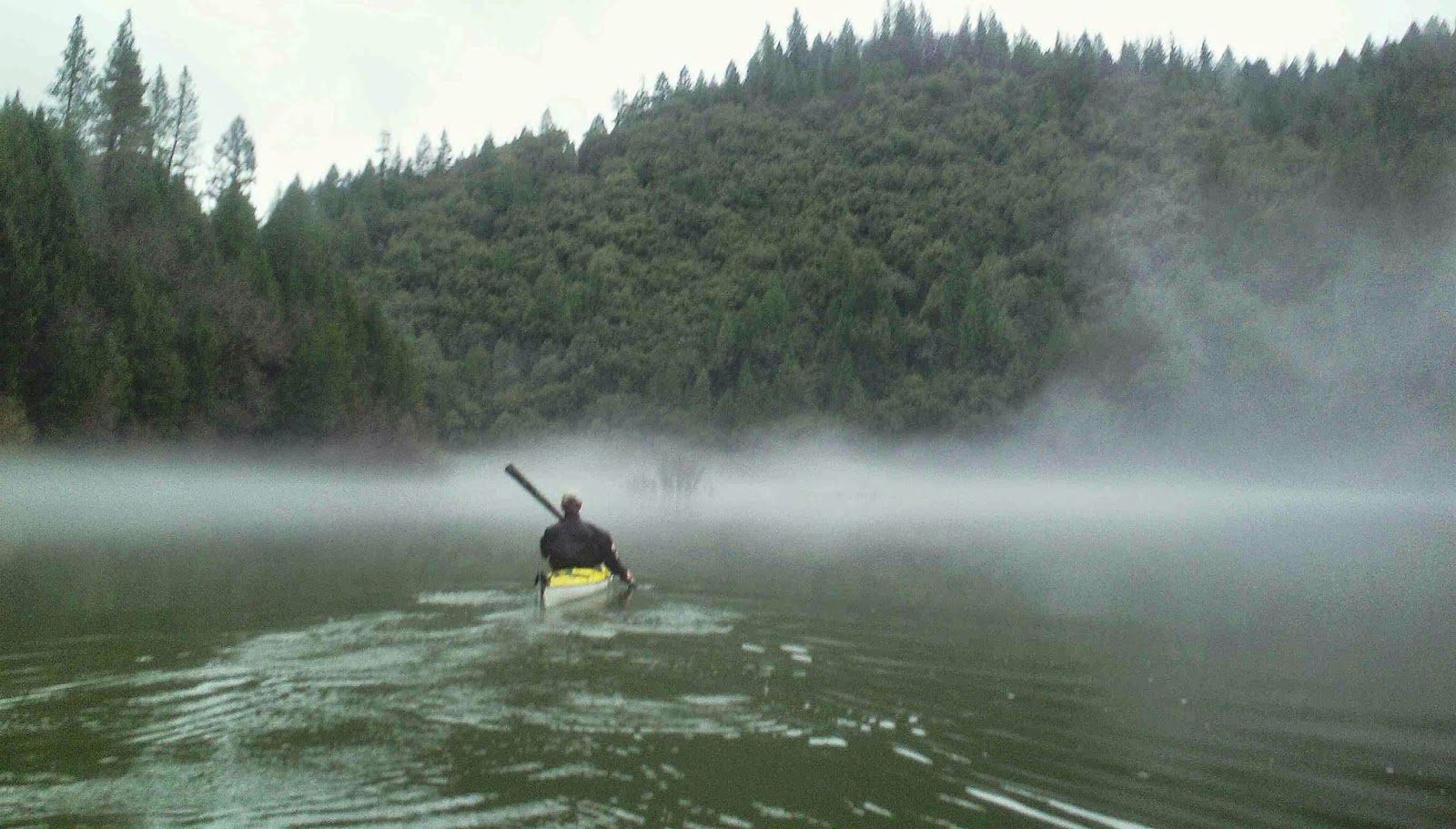I bought my second kayak and after that my third one and so on. With each new kayak, I learned new skills and pushed my boundaries.--Gnarlydog News
It was a great boat. It really was. My 12-foot Perception Prodigy 12.0 with a large and roomy cockpit, open bow, and stern bulkhead. The roto-molded polyethylene kayak streamlined by design tracked straight and true upstream on the Otter Tail River. At the time, I didn't really know anything about kayaks except I wanted one and it had to be a sit inside.
I had kayaked a few summers before on Lake Michigan and always like canoeing on school trips and with the Boy Scouts. I have always been summoned by the call of water, its raging rivers, and quiet lakes. Canadian Canoe Museum founder Kirk Wipper said that the canoe and kayak have become a medium to experience peace, beauty, freedom, and adventure. "To travel the paths in natural places," he said, "Makes all the differences and in this, the canoe and kayak are essential partners."
For someone who has never paddled a lot before my Perception Prodigy 12.0 was very easy to maneuver. It tracked straight, and I found that with a slight lean could easily adjust the course. In that first summer kayaking, I took it everywhere I could find a place to paddle. Countless trips on the Red River and into Minnesota lake country. I really loved that boat. It got me into kayaking. It got me into the game. However, it wasn't long before I can say, I outgrew it. The kayak just wasn't enough boat for me to do the things I wanted to do. My skill levels had advanced past the boat specs. If I was going to become a better kayaker, I had to upgrade my kayak. I'm was not alone.
"I have seen so many people buy their first boat and have their mind-filled delusions of grandeur," wrote Paddler Magazine's Scott Edwards, in an article Buy Your Second Kayak First, posted in December of 2015. "Only to have them dashed because the boat of their dreams has in short order become inadequate to match their rapidly growing skill set." Edwards states that getting the ‘right’ kayak is going to cost you more, but, much less than buying the ‘wrong’ kayak, only to get the ‘right’ one a year or so later.
"The biggest reason we see people experiencing this is because they didn't get a boat specific to the activities they wanted to do," said a representative from Austin Kayak, "They just went out there and got the first thing that looked good and that wasn't too expensive. For example, if you're a fly fisherman, something like a Diablo kayak is a fantastic fit because of its open deck and stability so you can stand and cast from pretty much anywhere. You're not likely to appreciate and notice these details until you've done it from another boat that isn't as well suited for fly fishing."
Edwards agrees, in his article, he warns new kayakers to avoid "big box stores" in their kayak purchase, unless they just plan on floating around the lake. "The first things you have to decide is what kind of kayaking you are going to do the most." recommended Edwards, "If you are going to try your hand at whitewater kayaking, your needs are going to be different than someone going sea kayaking. It is very hard to have one kayak do everything well, which is why kayakers who paddle diverse types of water have more than one kayak."
They both suggest a test drive to make sure you and the kayak are a good fit. Many paddle shops like Austin Kayak hold demo days for paddlers searching for the right boat. "People have the opportunity to try before they buy which makes a huge difference in finding the right fit," said a spokesman from Austin Kayak, "It'll either help confirm the boat you've been lusting for is the right choice or introduce you to something new you didn't realize was an option. Renting a boat from a local outfitter is another great way to get your feet wet before committing."
Experts suggest at demo day, you explore all the aspects of the kayak's fit and feel, along with having a specialist assist you in making sure the kayak is set up for you. Many kayaks have myriad adjustments for comfort. Is it equipped with thigh braces? Do you make contact with them in the correct spots and are they adjustable? What is your preference? A seatback or back band, and how do the foot braces feel? These questions can be answered just by sitting in the boat.
"My first boat was a yellow Prijon sea kayak," said Sacramento paddler Mike Rumsey, "I paddle a Prijon a couple times on Folsom Lake, when I first started kayaking. I paddled it in Paddle to the Sea 2012 when we paddled from Chili Bar to the Golden Gate. It was my first time under the Gate. I'm sure the bridge was a spectacular sight, but I didn't see it. I was in survival mode. Now I can't stand to paddle it. So I replaced it with two boats."
My path on the water was much the same. The next year I purchased a Wilderness Systems Tsunami. I liked it so much I got another a year later and after that never paddled my Prodigy 12.0 much more ever again. I only took it out when I needed an extra boat to take family and friends kayaking. When I moved to California, I only had room for five boats and sold several others, including the Prodigy 12.0. Looking back, the initial expense played a part in my decision to buy the Prodigy. Over the year, I quickly outgrew my kayak, and the second purchase added to be substantially more than if I made that investment in the first place.
This article was originally published Outside Adventure to the Max on April 29, 2016.
Keep up with Outside Adventure to the Max, on our Facebook page and Instagram and now on Youtube.




















